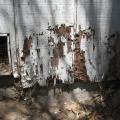Essential Roof Inspection Checklist for Homeowners
Regular roof inspections are a crucial aspect of home maintenance that homeowners should prioritize. By conducting thorough inspections, you can identify potential issues early on and ensure the longevity and safety of your home. This comprehensive roof inspection checklist will guide homeowners on the essential steps to take and best practices to follow.
Key Takeaways:
- Regular roof inspections are vital for maintaining the integrity of your home.
- A thorough roof inspection checklist helps detect problems early and prevent costly repairs.
- Ensure safety measures are in place before conducting a roof inspection.
- Properly prepare and gather the necessary tools before starting the inspection.
- Inspect both the exterior and interior components of the roof.
Stay tuned for the following sections that will provide detailed insights on the importance of regular roof inspections, safety measures to consider, and step-by-step guidelines for a comprehensive roof inspection.
Understanding the Importance of Roof Inspections
A regular roof inspection is vital for the long-term integrity and durability of your home. By conducting routine inspections, you can identify potential issues early on and prevent costly repairs or replacements. Ignoring roof maintenance can lead to severe damage, compromising the safety and comfort of your living space.
Roof inspections serve as a proactive measure to ensure that your home is adequately protected from the elements, such as rain, snow, wind, and extreme temperature fluctuations. Over time, exposure to these conditions can weaken the roofing materials and create vulnerabilities that may result in leaks, structural damage, or even mold growth.
By investing in regular inspections, you can detect and address issues promptly, preventing them from escalating into more significant problems. For instance, an inspection can reveal damaged or missing shingles, deteriorating flashing, clogged gutters, or weakened roofing components. Taking immediate action to address these issues can help extend the lifespan of your roof and save you from expensive repairs in the future.
Furthermore, regular roof inspections are particularly crucial where harsh weather conditions can pose significant challenges for homeowners. The freeze-thaw cycles, heavy snowfall, and strong winds experienced in many northern regions like Surrey, can accelerate the wear and tear on roofs, this is where Surrey Roofing needs to be at its finest. Conducting inspections at least once a year, ideally during the spring or fall, can help identify any weather-related damages and ensure your roof is prepared to withstand the next season especially if you are in a global city like Vancouver, you should only rely on the best vancouver roofers!
Inspections are not only recommended for older roofs but also for new ones. Even if your roof is relatively new, it is still susceptible to manufacturing defects, improper installation, or other hidden issues. Conducting regular inspections can catch these problems early, allowing you to address them promptly with the warranty or contractor, if applicable.
The Benefits of Regular Roof Inspections:
- Early detection of roofing issues
- Prevention of costly repairs or replacements
- Protection against water damage and mold growth
- Extended lifespan of the roof
- Maximized energy efficiency
- Enhanced safety and structural integrity
Despite the importance of regular roof inspections, it is essential to prioritize safety and take appropriate precautions when conducting the inspection yourself. If you are uncomfortable with heights or lack the necessary knowledge and experience, it is advisable to hire a professional roofing contractor such as Paragon Roofing BC who can perform a thorough examination of your roof.
Next, we will explore the safety measures homeowners should consider before conducting a roof inspection.
Please review Table 1 for a summary of the benefits of regular roof inspections:
|
Benefits of Regular Roof Inspections |
|
Early detection of roofing issues |
|
Prevention of costly repairs or replacements |
|
Protection against water damage and mold growth |
|
Extended lifespan of the roof |
|
Maximized energy efficiency |
|
Enhanced safety and structural integrity |
Safety Measures for Roof Inspections
When it comes to conducting a roof inspection, the safety of homeowners should always be a top priority. Roof inspections involve working at heights and navigating potentially hazardous conditions, so it's essential to take the necessary safety measures to minimize the risk of accidents or injuries.
Here are some important safety precautions to keep in mind before you embark on a roof inspection:
- Ensure proper footwear: Wear sturdy, non-slip shoes with good traction to prevent slipping on wet or uneven surfaces.
- Use fall protection equipment: If your roof has a steep slope or is more than one story high, consider using safety harnesses, ropes, and anchors to secure yourself and prevent falls.
- Check the weather conditions: Avoid conducting a roof inspection during inclement weather, such as strong winds, rain, or snow, as it can increase the risk of accidents and make the roof surface slippery.
- Inspect the roof's stability: Before stepping onto the roof, visually assess its overall stability. Look for signs of sagging, loose or damaged materials, and weak spots that could be a safety hazard.
- Use a stable ladder: Ensure that the ladder you are using is in good condition, properly set up, and securely positioned on a flat surface. Have someone hold the ladder for added stability if possible.
- Beware of electrical hazards: Take precautions to avoid power lines when inspecting the roof, and ensure any nearby electrical equipment is turned off in case it poses a risk.
Safety should never be compromised during a roof inspection. By following these essential safety measures, homeowners can protect themselves from potential accidents and injuries, ensuring a smooth and secure inspection process.
FAQ
What is the purpose of a roof inspection checklist?
A roof inspection checklist serves as a comprehensive guide for homeowners to assess the condition of their roofs. It helps identify any potential issues or damage, ensuring timely repairs or maintenance to prevent further damage or costly replacements.
How often should homeowners inspect their roofs?
It is recommended that homeowners inspect their roofs at least twice a year, preferably in the spring and fall. Additionally, it is essential to conduct inspections after severe weather events or any noticeable changes to the roof's condition.
Can I perform a roof inspection myself, or should I hire a professional?
While homeowners can conduct basic visual inspections, it's advisable to hire a professional roofing inspector for a more thorough assessment. Professionals have the expertise to identify potential issues that may be overlooked by an untrained eye and provide accurate recommendations for repair or maintenance.
What safety measures should I take before conducting a roof inspection?
Before conducting a roof inspection, it is crucial to prioritize safety. Ensure you have a stable ladder, wear appropriate personal protective equipment (PPE) such as non-slip shoes and a safety harness, and avoid inspecting the roof during adverse weather conditions.
What are some common signs of roof damage to look out for?
Homeowners should keep an eye out for signs such as missing or damaged shingles, sagging areas, water stains on ceilings or walls, excessive moss or algae growth, and any visible cracks or gaps in the roof structure. These signs may indicate potential roof damage or underlying issues.
Are there specific considerations for commercial roof inspections?
Yes, conducting commercial roof inspections involves additional factors such as checking HVAC units, rooftop equipment, and compliance with safety requirements. It's best to engage a professional roofing contractor experienced in commercial roofing systems for comprehensive inspections.
How can regular roof maintenance benefit homeowners?
Regular roof maintenance helps identify and address minor issues before they escalate into major problems. By cleaning debris, trimming overhanging branches, and scheduling professional inspections, homeowners can prolong the lifespan of their roofs and potentially save on costly repairs.
More to Read:
Previous Posts:








